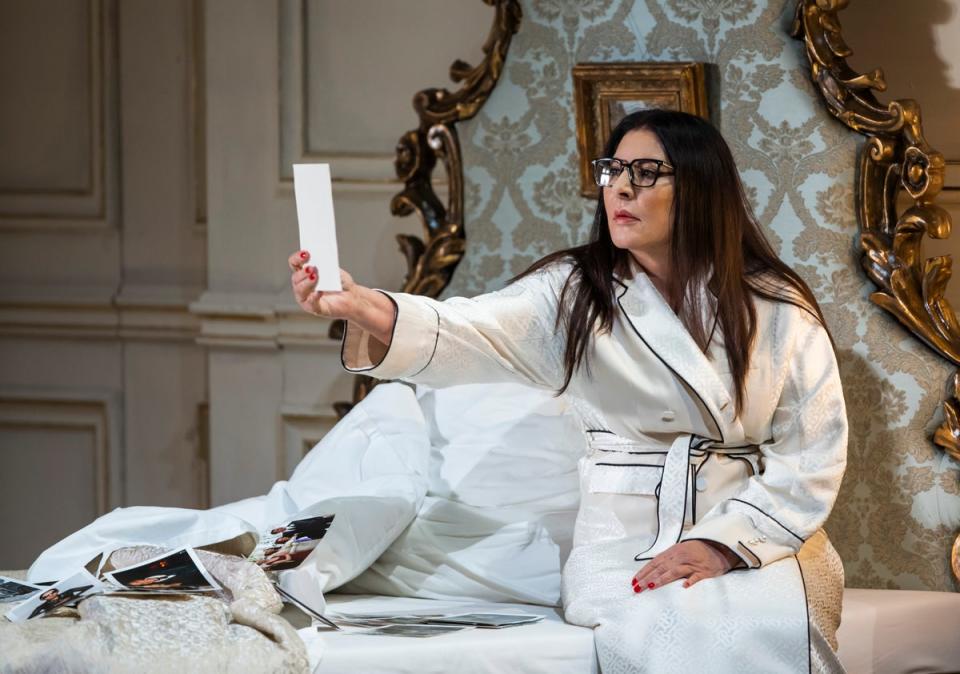Marina Abramović 7 Deaths of Maria Callas at ENO review: funerary offering and personal exorcism

Opera takes special delight in killing off its female protagonists. Maria Callas’s relatively short opera house career lasted from 1947 to 1965 but in that time she must have “died” onstage dozens of times. Eventually she seemed to become in real life the kind of doomed woman that she portrayed. After her very public affair with millionaire Aristotle Onassis ended with his 1968 marriage to Jackie Kennedy, Callas became a recluse, dying alone in her Paris flat in 1977.
The performance artist Marina AbramoviÄ was 16 when, in the early 1960s, she first heard Callas on the radio. She became obsessed; as she said in an interview with the New York Times, “I read eight biographies… and there was so much similarity that I see in myself. We are Sagittarius, the same; we had bad mothers.”
Those fairly slender connections lie behind AbramoviÄ’s performance piece 7 Deaths of Maria Callas, which has travelled the world since its Munich premiere in 2020.
It now arrives in London, coinciding with the AbramoviÄ retrospective at the Royal Academy. The London performances are mounted by English National Opera, but 7 Deaths is only tangentially opera. AbramoviÄ’s set recreates the room in which Callas died; to one side of the stage, AbramoviÄ “plays” Callas, ostensibly asleep in bed. One by one, seven singers enter to deliver, without acting but with maximum feeling, an aria closely associated with Callas: hits from Madam Butterfly, La Traviata, Lucia di Lammermoor, and so on. Each is accompanied by the full ENO orchestra, conducted by Yoel Gamzou.
Meanwhile, on a giant screen behind the singers, we see filmed enactments, not so much of each aria, but of its symbolic weight. AbramoviÄ plays the heroine, while her occasional collaborator, actor Willem Dafoe, plays the man who, more often than not, kills her. The slo-mo flow and drenched colours of these short films (made by Nabil Elderkin) gives them the feel of glossy ads but they certainly have an impact.

Between the arias, we hear snatches of an atmospheric score by Marko NikodjeviÄ, which moves centre-stage after the final aria. We also hear a pre-recorded AbramoviÄ, invoking, in feverish monotone, Callas’s memories of her love affairs. Eventually AbramoviÄ rises and, still dressed for bed, leaves the stage. The seven singers return as chambermaids, tidying the apartment before draping everything in gauzy black.
At last we hear Callas’s own voice, complete with vinyl hiss and crackle. AbramoviÄ re-emerges, kitschily resplendent in a dazzling gold gown, every inch the type of diva of which Callas was the archetype. 7 Deaths of Maria Callas may not be opera but its elaborate 90-minute ritual is both funerary offering and personal exorcism.
To November 11; eno.org

 Yahoo Finance
Yahoo Finance 